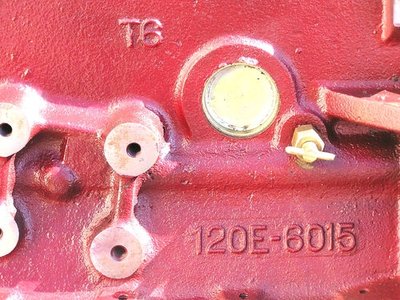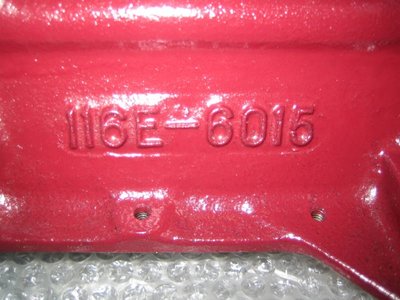TC engine block identification
34 posts
• Page 1 of 3 • 1, 2, 3
Hello
I am a new member to this forum, but have been Lotus owner since 1982 (mainly 907 variants)
Many years ago I purchased a box of parts that were stored in a barn in France, and I am now trying to identify what I bought.
I have used the search engines, the Buckland book and Wilkins, but have not found the info I wanted.
So I am adding a few pictures in hope that someone may be able to enlighten me
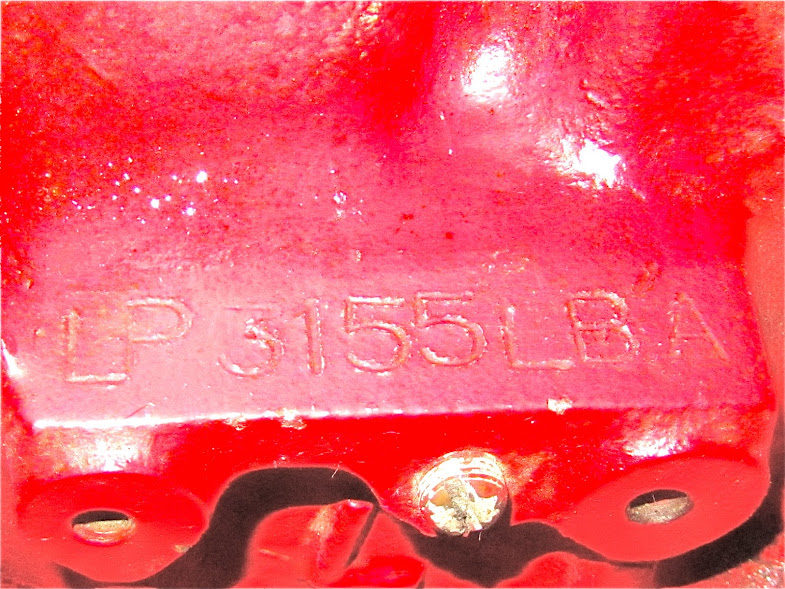
Engine number LBA ? Have heard of LA , LB and LBB
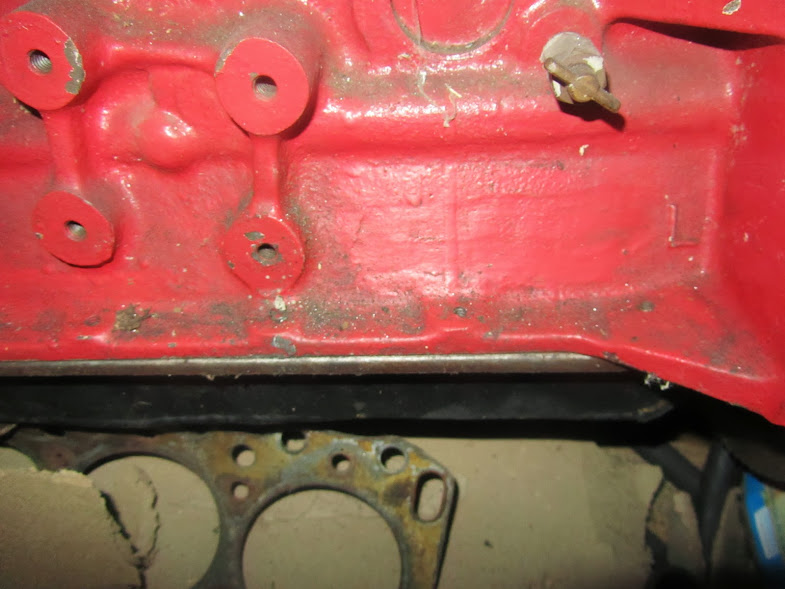
Just and "L" on the right hand side, has casting been machined off.
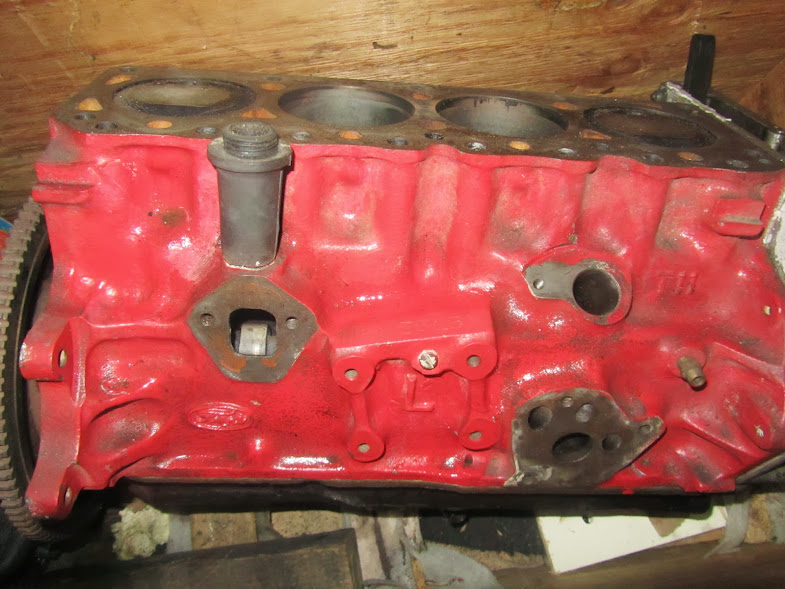
Cast mark "T11", and the "L"
Thank you fro any help on this one
Neil
I am a new member to this forum, but have been Lotus owner since 1982 (mainly 907 variants)
Many years ago I purchased a box of parts that were stored in a barn in France, and I am now trying to identify what I bought.
I have used the search engines, the Buckland book and Wilkins, but have not found the info I wanted.
So I am adding a few pictures in hope that someone may be able to enlighten me
Engine number LBA ? Have heard of LA , LB and LBB
Just and "L" on the right hand side, has casting been machined off.
Cast mark "T11", and the "L"
Thank you fro any help on this one
Neil
- Ndixon
- New-tral
- Posts: 8
- Joined: 02 Jun 2013
I believe your block to be from a Lotus Cortina MK1 (or early Elan) here is a similar one that came from a 1964 Lotus Cortina, LP 3719 LBA the casting number also ends with an ?L? as well as having the ?L? below the left side engine mounting.
It was common practice for Lotus to grind off the casting numbers but the reason is unclear although many theories abound, I do not know which block was the basis for the engine as the 116E and the 120E which were being used by Ford at the time did not have the casting number ending in ?L?
The later engines which had the casting ground off were stamped with 3020E which I believe was the designation for the MK2 Cortina Lotus. Later the practice of grinding stopped altogether....Welcome to the weird world of Lotus Twin Cam
It was common practice for Lotus to grind off the casting numbers but the reason is unclear although many theories abound, I do not know which block was the basis for the engine as the 116E and the 120E which were being used by Ford at the time did not have the casting number ending in ?L?
The later engines which had the casting ground off were stamped with 3020E which I believe was the designation for the MK2 Cortina Lotus. Later the practice of grinding stopped altogether....Welcome to the weird world of Lotus Twin Cam
Brian
64 S2 Roadster
72 Sprint FHC
64 S2 Roadster
72 Sprint FHC
-

types26/36 - Coveted Fifth Gear

- Posts: 3407
- Joined: 11 Sep 2003
Hi Brian
Thanks for your reply, I am actually amazed at seeing a similar block, almost a twin.
I will now take a good look at the cylinder head that came with the block, maybe more clues can be uncovered.
The plan, is to rebuild the engine, then find a car to put it into !
Neil
Thanks for your reply, I am actually amazed at seeing a similar block, almost a twin.
I will now take a good look at the cylinder head that came with the block, maybe more clues can be uncovered.
The plan, is to rebuild the engine, then find a car to put it into !
Neil
- Ndixon
- New-tral
- Posts: 8
- Joined: 02 Jun 2013
Ndixon wrote:I will now take a good look at the cylinder head that came with the block, maybe more clues can be uncovered.Neil
The cylinder heads on the early engines had the engine number stamped on the rear of the head, if the head has the matching LP number on it would be the original head.
Brian
64 S2 Roadster
72 Sprint FHC
64 S2 Roadster
72 Sprint FHC
-

types26/36 - Coveted Fifth Gear

- Posts: 3407
- Joined: 11 Sep 2003
Neil
Engine number LP (stands for Lotus Power) 3155 was fitted to Elan 26/4515 which was built or invoiced on 18th March 1965. This was just five unit numbers after the first FHC was produced, so it's conceivable that actually it was fitted into a Type 36. The records don't indicate Type numbers.
The suffix letters indicate the thickness of the cylinder walls, as I understand it.
Tim
Engine number LP (stands for Lotus Power) 3155 was fitted to Elan 26/4515 which was built or invoiced on 18th March 1965. This was just five unit numbers after the first FHC was produced, so it's conceivable that actually it was fitted into a Type 36. The records don't indicate Type numbers.
The suffix letters indicate the thickness of the cylinder walls, as I understand it.
Tim
Visit www.lotuselansprint.com
-

trw99 - Coveted Fifth Gear

- Posts: 2604
- Joined: 31 Dec 2003
Neil
I take it you obtained the cylinder head number from the rear of the head, below the web that joins the two cam covers, etched in at the bottom of the inverted T reinforcement where it abuts the block.
The engine number 10403 is from mid 1968. It is not listed as belonging to an Elan. However, at this time Lotus were introducing additional engine number prefixes and F would refer to a +2 Elan. The L might be explained away as an error, tacked on by an operator more used to using the up until then ubiquitous LP. Alternatively, the F may be a P missing the ), as it were!
Tim
I take it you obtained the cylinder head number from the rear of the head, below the web that joins the two cam covers, etched in at the bottom of the inverted T reinforcement where it abuts the block.
The engine number 10403 is from mid 1968. It is not listed as belonging to an Elan. However, at this time Lotus were introducing additional engine number prefixes and F would refer to a +2 Elan. The L might be explained away as an error, tacked on by an operator more used to using the up until then ubiquitous LP. Alternatively, the F may be a P missing the ), as it were!
Tim
Visit www.lotuselansprint.com
-

trw99 - Coveted Fifth Gear

- Posts: 2604
- Joined: 31 Dec 2003
trw99 wrote:Neil
Engine number LP (stands for Lotus Power) 3155 was fitted to Elan 26/4515 which was built or invoiced on 18th March 1965. This was just five unit numbers after the first FHC was produced, so it's conceivable that actually it was fitted into a Type 36. The records don't indicate Type numbers.
The suffix letters indicate the thickness of the cylinder walls, as I understand it.
Tim
The suffix numbers do not indicate the cylinder wall thickness. There is nothing in any of the numbers that indicates thickness or probable thickness of the cylinder bore walls. All that is repeated on the web and in books about that is myth. Ultrasonically measure enough cylinder blocks as I have and all you find is random variation over a relatively small range for all blocks of all years, numbers, type etc. This of course excludes some special and sometime legendary mythical nature blocks that were made by Ford and Cosworth for racing purposes but you don't find these in general circulation and they never have been. The only general circulation blocks I have never tested are the AX South African cast blocks which are supposed to have thicker walls but I have never measured any and given the casting technology used a design thicker wall is not really possible without Siamese bores and deletion of the central cross block oil passage I believe.
cheers
Rohan
-

rgh0 - Coveted Fifth Gear

- Posts: 8413
- Joined: 22 Sep 2003
Hi Rohan
Whilst I am sure you are correct that all blocks have a random variation of cylinder wall thickness, the suffix letters clearly had a meaning to someone at Lotus at some stage. The fact that they were wrong in hindsight I acknowledge. My point here is that the letters were not attached to the engine number at the time of manufacture for fun (unless someone had an odd sense of humour!).
I guess the question therefore is, what did the factory believe the suffix letters meant at the time they applied them?
Tim
Whilst I am sure you are correct that all blocks have a random variation of cylinder wall thickness, the suffix letters clearly had a meaning to someone at Lotus at some stage. The fact that they were wrong in hindsight I acknowledge. My point here is that the letters were not attached to the engine number at the time of manufacture for fun (unless someone had an odd sense of humour!).
I guess the question therefore is, what did the factory believe the suffix letters meant at the time they applied them?
Tim
Visit www.lotuselansprint.com
-

trw99 - Coveted Fifth Gear

- Posts: 2604
- Joined: 31 Dec 2003
Yes that is the question !!!.
The related question is many of the blocks with ground off casting numbers have a suffiix number that does not appear on the castings found in non Lotus non ground off block circulation when the casting numbers were not partially or fully ground off. What was going on between Ford and Lotus with the block castings at this time I don't think anyone knows but it did not relate to wall thickness as far as ultrasonic measurements I have done show. Maybe the suffix numbers and the reason for grinding of all or part of the rest of the casting number have some relationship but what it was I don't think anyone knows
My measurements are representative I believe of the Australian block population of the major variations that came to Australia ( and the current newly cast blocks also!). There may be some items circulating in the European block population that never came to Australia that would change the result. However the casting technology used was all the same and it was pushed to the limit in the design to maximise wall thickness and minimise block length within that sand casting non Siamese bore technology limits and that has not changed as evidenced by the new non Siamese blocks being made now by Ford. You can increase the bore walls by Siamese of the bores as shown by Cosworth originally, then by the various alloy blocks and currently by the special iron blocks being cast for QED I believe.
cheers
Rohan
The related question is many of the blocks with ground off casting numbers have a suffiix number that does not appear on the castings found in non Lotus non ground off block circulation when the casting numbers were not partially or fully ground off. What was going on between Ford and Lotus with the block castings at this time I don't think anyone knows but it did not relate to wall thickness as far as ultrasonic measurements I have done show. Maybe the suffix numbers and the reason for grinding of all or part of the rest of the casting number have some relationship but what it was I don't think anyone knows
My measurements are representative I believe of the Australian block population of the major variations that came to Australia ( and the current newly cast blocks also!). There may be some items circulating in the European block population that never came to Australia that would change the result. However the casting technology used was all the same and it was pushed to the limit in the design to maximise wall thickness and minimise block length within that sand casting non Siamese bore technology limits and that has not changed as evidenced by the new non Siamese blocks being made now by Ford. You can increase the bore walls by Siamese of the bores as shown by Cosworth originally, then by the various alloy blocks and currently by the special iron blocks being cast for QED I believe.
cheers
Rohan
-

rgh0 - Coveted Fifth Gear

- Posts: 8413
- Joined: 22 Sep 2003
Hello all,
The information flow is really rich and all is getting complex.
I have take some picture of the head which may help:

Back of the cylinder head,

under the inlet side

under exhaust side between cyl 2 and cyl 3

full underside view

does this extra information help, thanks again for all the info posted on this thread
Neil
The information flow is really rich and all is getting complex.
I have take some picture of the head which may help:
Back of the cylinder head,
under the inlet side
under exhaust side between cyl 2 and cyl 3
full underside view
does this extra information help, thanks again for all the info posted on this thread
Neil
- Ndixon
- New-tral
- Posts: 8
- Joined: 02 Jun 2013
Neil
I have discovered that LF stands for Lotus Ford. I would therefore make the assumption that your cylinder head was fitted to a MkII Lotus Cortina. Perhaps Mark will be able to confirm; I didn't find any info on engine numbers on your site, Mark!
I have still not yet tracked down what the LA, LBA etc suffix numbers were thought to indicate back in the day. Anyone any theories?
Tim
I have discovered that LF stands for Lotus Ford. I would therefore make the assumption that your cylinder head was fitted to a MkII Lotus Cortina. Perhaps Mark will be able to confirm; I didn't find any info on engine numbers on your site, Mark!
I have still not yet tracked down what the LA, LBA etc suffix numbers were thought to indicate back in the day. Anyone any theories?
Tim
Visit www.lotuselansprint.com
-

trw99 - Coveted Fifth Gear

- Posts: 2604
- Joined: 31 Dec 2003
There are basically two cylinder heads, the early mk1 and the later mk2. Because your engine is quite early I think it would have had the mk1 head which can be identified by the protrusions near the spark plugs, you have not shown the top but I think the head you have will be mk2 head from a later engine and this is why it is marked with a different number.
Can you post a pic of the top of the head and also the cam cover.
The mk2 head can be identified by the single raised boss near no one spark plug.
Tim, are you sure LP stands for Lotus Power, I was under the impression it stood for Lotus Production and LF for Lotus Ford as you mentioned.
The Miles Wilkins book mentions the LA LAA & LB markings.
Can you post a pic of the top of the head and also the cam cover.
The mk2 head can be identified by the single raised boss near no one spark plug.
Tim, are you sure LP stands for Lotus Power, I was under the impression it stood for Lotus Production and LF for Lotus Ford as you mentioned.
The Miles Wilkins book mentions the LA LAA & LB markings.
Brian
64 S2 Roadster
72 Sprint FHC
64 S2 Roadster
72 Sprint FHC
-

types26/36 - Coveted Fifth Gear

- Posts: 3407
- Joined: 11 Sep 2003
Ah you mean those numbers. I thought you meant the letters that appear as a suffix after the xxxx 6015 block casting number on some engines.
The LA LB LAA numbers stamped on the front face represented Lotus or Fords or the various engine assemblers that Lotus used relative crude attempt at block grading using special callipers through the various core plug holes to measure the wall thickness at a few points. The code is described in Wilkins book. it is the only block actual measurements from the original casting and machining and give rough indication of wall thickness.
My personal interpretation of the somewhat cryptic comments in the Wilkins book are:
LA blocks OD of bore casting at top end of range - around 91 to 92 mm in my experience
LB blocks OD of bore casting at lower end of range - around 90 to 91 mm.in my experience
LAA top end of casting but some sort of machining problem so the second A added after machining.
LA block good for bigger bore engines. This is generally true but depends on how well the bore is centred in the casting and whether offset boring can re-centre it and how representative their spot measurements were. You really need a full survey of each bore with ultrasonic measuring to know what's possible in terms of boring out a block.
Having measured lots of non Lotus blocks I find the distribution of blocks in the upper end and lower end is about the same as in the Lotus blocks so there appears to have been no real actual effective selection or deliberate casting of the Lotus blocks for thicker walls
Maybe some one that knows Miles can ask him more about what his cryptic comments in his book meant
cheers
Rohan
cheers
Rohan
The LA LB LAA numbers stamped on the front face represented Lotus or Fords or the various engine assemblers that Lotus used relative crude attempt at block grading using special callipers through the various core plug holes to measure the wall thickness at a few points. The code is described in Wilkins book. it is the only block actual measurements from the original casting and machining and give rough indication of wall thickness.
My personal interpretation of the somewhat cryptic comments in the Wilkins book are:
LA blocks OD of bore casting at top end of range - around 91 to 92 mm in my experience
LB blocks OD of bore casting at lower end of range - around 90 to 91 mm.in my experience
LAA top end of casting but some sort of machining problem so the second A added after machining.
LA block good for bigger bore engines. This is generally true but depends on how well the bore is centred in the casting and whether offset boring can re-centre it and how representative their spot measurements were. You really need a full survey of each bore with ultrasonic measuring to know what's possible in terms of boring out a block.
Having measured lots of non Lotus blocks I find the distribution of blocks in the upper end and lower end is about the same as in the Lotus blocks so there appears to have been no real actual effective selection or deliberate casting of the Lotus blocks for thicker walls
Maybe some one that knows Miles can ask him more about what his cryptic comments in his book meant
cheers
Rohan
cheers
Rohan
-

rgh0 - Coveted Fifth Gear

- Posts: 8413
- Joined: 22 Sep 2003
34 posts
• Page 1 of 3 • 1, 2, 3
Total Online:
Users browsing this forum: No registered users and 29 guests

